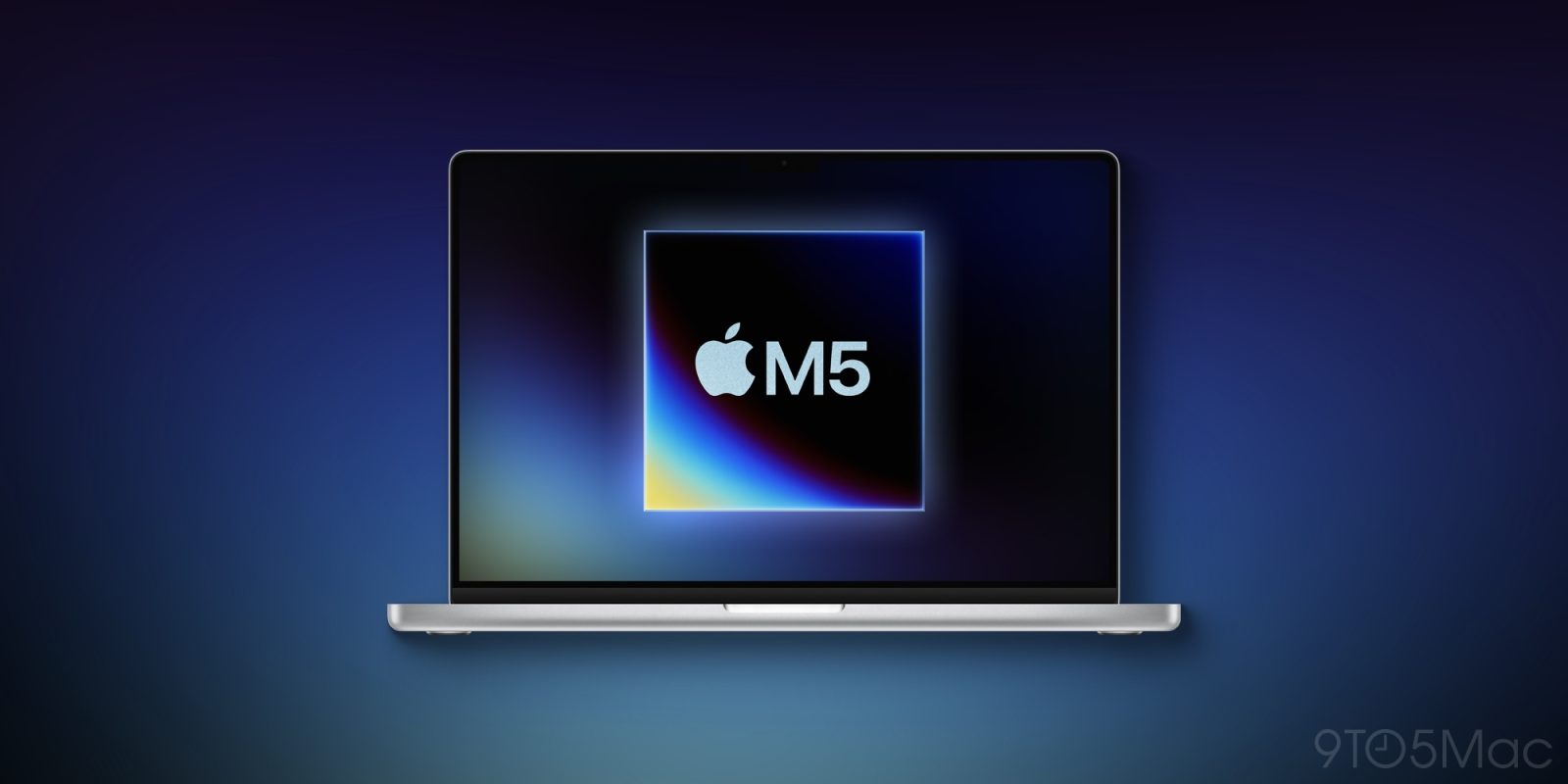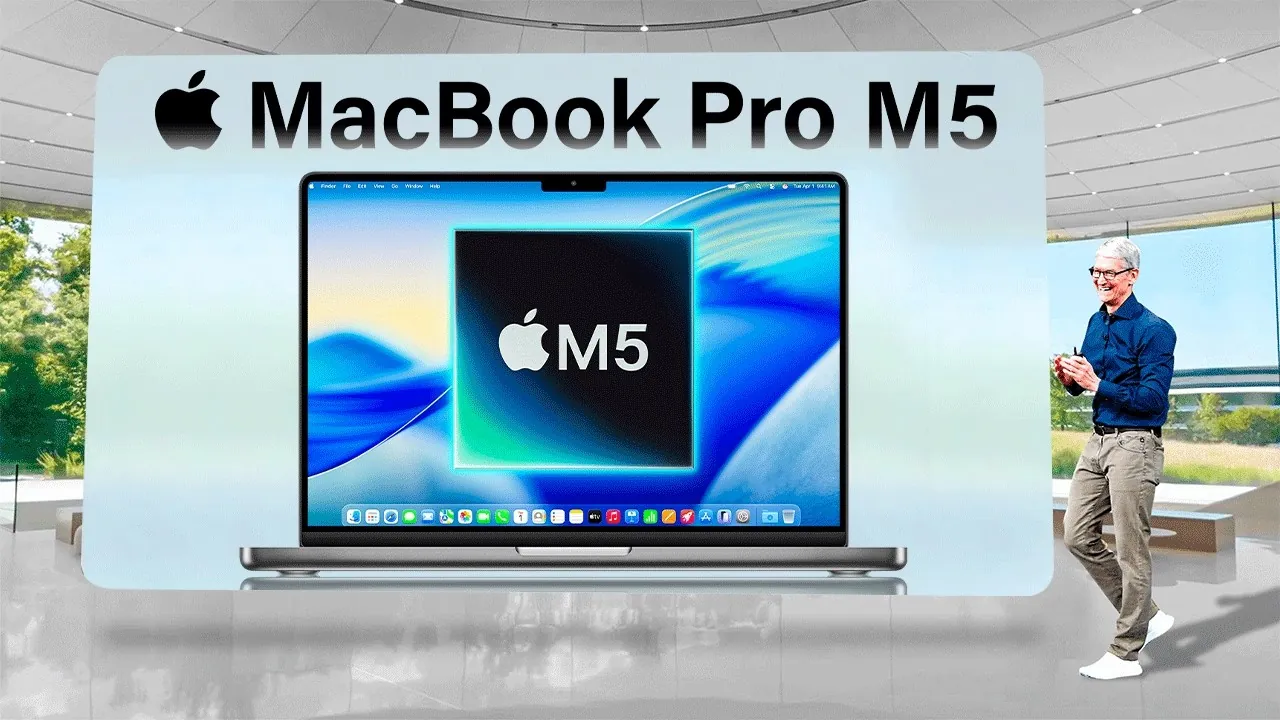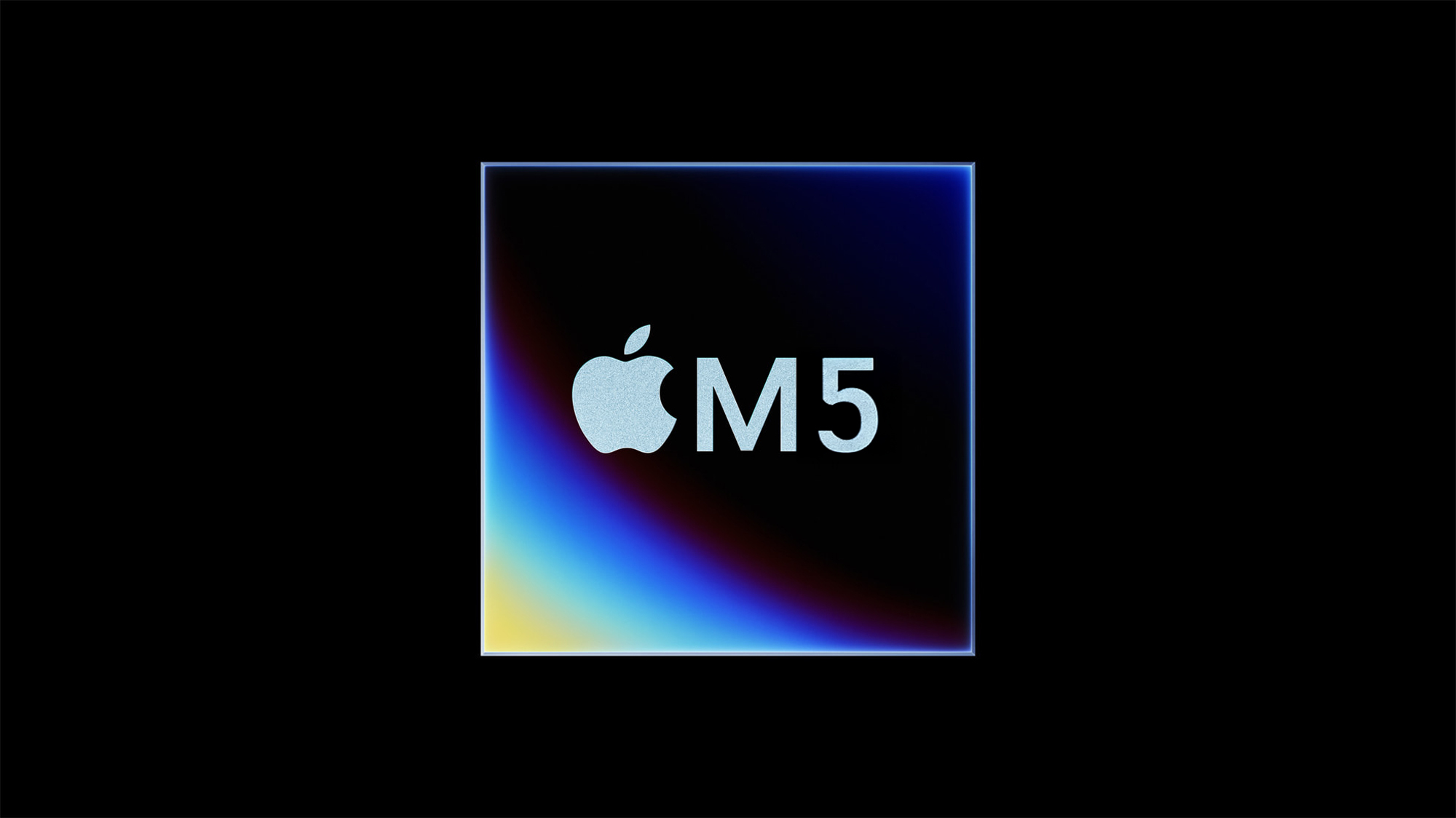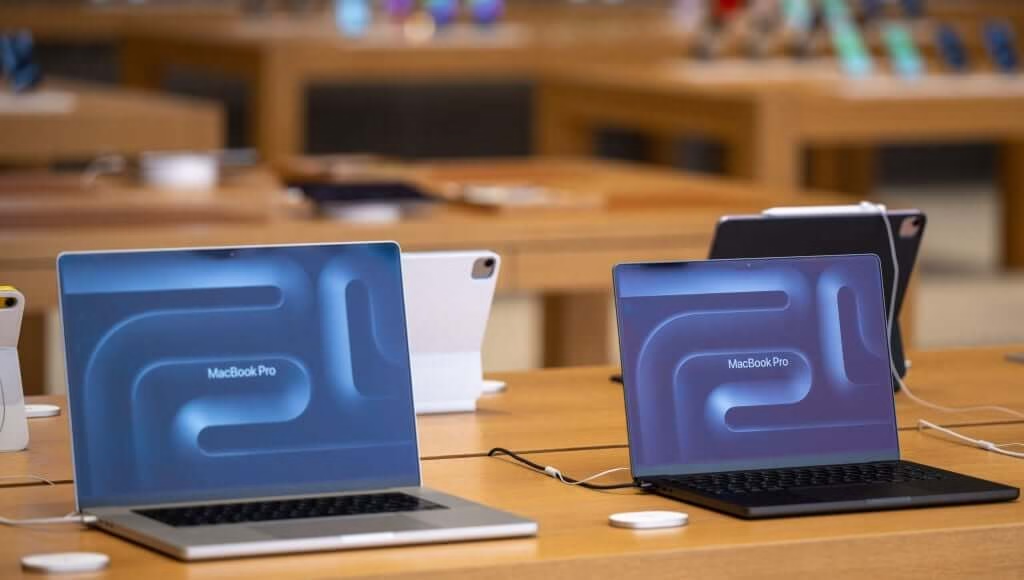The Apple M5 Chip and MacBook Pro: A Look at the Revised 2026 Timeline
Estimated reading time: 8 minutes
Key Takeaways
- The highly anticipated M5 MacBook Pro release date 2025 has been revised, with authoritative reports now pointing to early 2026.
- Apple’s M5 chip is expected to bring substantial M5 chip performance improvements across CPU, GPU, and Neural Engine.
- Key MacBook Pro with M5 chip features are likely to focus on internal refinements like advanced connectivity and thermal management, rather than major design overhauls or immediate OLED display integration.
- The Apple M5 chip devices list will eventually extend across the entire Mac lineup and the iPad Pro, though likely in a staggered rollout throughout 2026.
- The delay highlights Apple’s commitment to delivering polished products, prioritizing significant generational leaps over annual minor updates.
Table of Contents
- The Apple M5 Chip and MacBook Pro: A Look at the Revised 2026 Timeline
- Key Takeaways
- Understanding the M5 MacBook Pro Launch Timeline
- Power Unleashed: Apple M5 Chip Rumored Upgrades and Performance Improvements
- Beyond the Chip: Expected MacBook Pro with M5 Chip Features
- A Wider Ecosystem: Apple M5 Chip Devices List
- Frequently Asked Questions
The ongoing evolution of Apple Silicon continues to spark immense anticipation for the next significant leap in performance and efficiency. While initial buzz centered around an M5 MacBook Pro release date 2025, recent authoritative reports from highly reliable sources indicate a shift in Apple’s timeline, now pointing firmly towards a launch in early 2026. This post will delve into these updated expectations, explore the anticipated Apple M5 chip rumored upgrades, discuss potential M5 chip performance improvements, highlight expected MacBook Pro with M5 chip features, and speculate on the broader Apple M5 chip devices list across the ecosystem.


Understanding the M5 MacBook Pro Launch Timeline
The journey towards the next generation of Apple’s custom silicon has seen evolving expectations regarding the M5 MacBook Pro release date 2025. Early speculation often aligned with Apple’s historical pattern of annual MacBook Pro refreshes, typically occurring in the October/November timeframe. This predictable cadence fueled assumptions that the M5 series would logically follow the M4 within a similar annual cycle, providing consistent upgrades for power users and creative professionals.
However, the M5 MacBook Pro is now expected to launch in early 2026, rather than in 2025 as previously rumored. Apple has reportedly delayed all M5 MacBook releases, including both the MacBook Pro and MacBook Air. This news, while potentially disappointing for those eager for an immediate upgrade, underscores a strategic shift. Recent reporting by Bloomberg’s Mark Gurman, widely regarded as one of the most reliable sources on Apple product timelines, indicates that Apple is “internally targeting” the first half of 2026 for new Macs featuring the M5 chip. This information overrides earlier speculation and leaks suggesting a late 2025 reveal, marking a notable break from Apple’s usual annual upgrade cadence for the MacBook Pro. Gurman’s consistent track record lends significant weight to this revised timeline, suggesting a deliberate change in Apple’s silicon rollout strategy.


No official reason for the delay has been provided by Apple, leading industry analysts to speculate on several potential factors. These could include:
- Supply chain constraints: Global chip shortages or production challenges for key components could be impacting Apple’s ability to ramp up M5 chip production sufficiently for a 2025 launch.
- Chip production challenges: Moving to a new fabrication process, or encountering unforeseen complexities in perfecting the M5 architecture, might necessitate more development time.
- Strategic shifts in Apple’s broader silicon development roadmap: Apple might be aiming for a more substantial generational leap with the M5, requiring additional R&D time to integrate more profound architectural advancements or new capabilities like enhanced AI integration. This could also be tied to a broader refresh cycle for their operating systems, such as future iOS updates, ensuring software and hardware are perfectly aligned.
- Market timing: Perhaps Apple feels the M3/M4 generation still has ample performance headroom for most users, allowing them to stretch the refresh cycle without alienating customers.
Despite the firm consensus shifting to 2026, Gurman’s sources emphasize that the situation is still “fluid,” leaving open a slim possibility for an earlier announcement or limited release. However, the prevailing sentiment is now firmly set on 2026 for the broader Apple M5 chip devices list rollout. This fluidity means consumers should temper their expectations for any sudden 2025 reveal, focusing instead on the exciting prospects of what a truly refined 2026 M5 lineup could offer.
Power Unleashed: Apple M5 Chip Rumored Upgrades and Performance Improvements
It’s crucial to acknowledge that no official specifications or details regarding the Apple M5 chip rumored upgrades have been announced by Apple. Therefore, any discussion of CPU, GPU, Neural Engine, efficiency, or memory advancements remains speculative until Apple formally reveals the hardware. However, based on industry trends and Apple’s historical progression, we can anticipate significant leaps.


CPU Enhancements: A New Benchmark for Processing Power
- Expect the M5 chip to feature an increased number of high-performance and efficiency cores compared to its M3/M4 predecessors. This architectural refinement is anticipated to deliver significant single-core and multi-core M5 chip performance improvements.
- This translates to faster execution for demanding tasks like 4K/8K video rendering, complex software compilation, intricate scientific simulations, and professional-grade content creation. For instance, video editors could see dramatically reduced export times, while software developers might experience near-instantaneous code compilation.
- The M5 is expected to build upon Apple’s innovative hybrid architecture, optimizing task distribution between performance and efficiency cores for superior power management without sacrificing raw power. This ensures that even the most intensive workloads run smoothly and efficiently.
GPU Advancements: Redefining Graphics Capabilities
- The M5 is rumored to bring substantial improvements to graphics rendering capabilities. This could include a higher core count for the integrated GPU, pushing the boundaries of on-device graphics processing.
- Potentially, we might see new architectural features like hardware-accelerated ray tracing and mesh shading, offering more realistic lighting, shadows, and reflections in games and professional 3D applications like Blender, Cinema 4D, and CAD software.
- Users should anticipate enhanced performance for graphic-intensive tasks across the board, from professional video grading and animation to high-fidelity gaming. The increased GPU power would also significantly benefit applications leveraging Metal API for advanced rendering.


Neural Engine: Supercharging On-Device AI
- The Neural Engine is expected to receive a significant boost in AI/ML processing power, measured in tera operations per second (TOPS). This enhancement will be critical for supporting more sophisticated on-device machine learning tasks.
- This power will directly fuel future AI features, particularly those related to Apple Intelligence, such as:
- Advanced image and video processing (e.g., real-time upscaling, object recognition, computational photography).
- Smarter predictive text and enhanced natural language processing in applications.
- Real-time audio analysis for transcription, noise cancellation, and personalized sound experiences.
- More efficient and powerful generative AI capabilities directly on the device, reducing reliance on cloud computing and enhancing privacy.
- The increased TOPS count will further establish Apple’s leadership in efficient, powerful on-device AI, critical for the next generation of smart applications, and could even impact the broader landscape of how AI is changing the world.
Efficiency: The Hallmark of Apple Silicon
- A cornerstone of Apple Silicon design, the M5 chip is expected to further optimize power consumption. This efficiency improvement will directly translate to even longer battery life for portable devices like the MacBook Pro.
- This means professionals can work on the go for extended periods without needing to recharge, enhancing productivity and flexibility. The improvements will stem from a more advanced manufacturing process (likely 3nm or even 2nm), combined with sophisticated power management units and refined core designs.
- This commitment to efficiency not only extends battery life but also enables sustained peak performance by minimizing heat generation, reducing the need for aggressive thermal throttling.
Unified Memory: Unifying Power and Speed
- While specific numbers are speculative, the M5 chip may support higher maximum configurable unified memory capacities and increased memory bandwidth. Currently, M3 Max offers up to 128GB; the M5 could push this to 192GB or even 256GB in its Ultra variants.
- This allows for even larger and more complex projects to be handled directly on the chip, encompassing massive datasets for machine learning, high-resolution video streams, and expansive 3D scenes.
- Increased bandwidth reduces bottlenecks, ensuring that the CPU and GPU can access data almost instantaneously, significantly enhancing overall system responsiveness for professionals working with memory-intensive applications.
Beyond the Chip: Expected MacBook Pro with M5 Chip Features
Beyond the raw processing power of the M5 chip, users are eager to know what new capabilities and refinements to expect from the MacBook Pro with M5 chip features themselves. However, recent reporting suggests that significant design or major feature changes—such as a widespread move to OLED displays—are now rumored for a later refresh, potentially as far out as 2027. This implies that the initial MacBook Pro with M5 chip models may offer relatively minor updates outside of the new silicon, focusing on internal enhancements that improve the user experience without drastically altering the external aesthetic.
Display: Maintaining Excellence with Subtle Enhancements
- While an OLED upgrade may be delayed, the MacBook Pro is still expected to feature the brilliant Liquid Retina XDR mini-LED ProMotion display technology. This means continued exceptional contrast ratios (often exceeding 1,000,000:1), incredibly high sustained brightness (up to 1,000 nits full-screen, 1,600 nits peak for HDR content), and precise local dimming zones that deliver true blacks.
- Any improvements would likely be subtle refinements in brightness uniformity, contrast ratios, or color accuracy across the panel. The ProMotion technology, providing adaptive refresh rates up to 120Hz, will continue to ensure incredibly fluid scrolling, smooth video playback, and highly responsive gaming, maintaining its position as a leading display for creative professionals.


Connectivity: Faster, More Reliable, and Future-Proof
- Anticipated upgrades include the latest wireless standards to enhance the MacBook Pro with M5 chip features. This means support for Wi-Fi 7 (802.11be), offering significantly faster speeds (potentially multi-gigabit), lower latency, and improved capacity in crowded network environments through technologies like Multi-Link Operation (MLO).
- Bluetooth 5.4 is also expected, providing more reliable and power-efficient connections to accessories, enhancing spatial audio experiences with compatible AirPods, and potentially supporting new functionalities like Auracast for broadcast audio.
- There’s also strong speculation about the inclusion of next-generation Thunderbolt ports, potentially Thunderbolt 5, which would double bandwidth to 80 Gbps bi-directionally, or even a massive 120 Gbps for display-heavy workloads via Bandwidth Boost. This would allow for faster data transfers with external SSDs, support for higher-resolution external displays (e.g., dual 6K monitors or a single 8K display at higher refresh rates), and more versatile docking solutions.


Design & Thermals: Subtle Refinement, Sustained Power
- Speculation suggests only subtle design refinements for the MacBook Pro with M5 chip features, perhaps minor tweaks to chassis dimensions or weight for improved portability, or even just enhanced internal component layout. The existing design, reintroduced with the M1 Pro/Max, is widely praised for its functionality and port selection.
- However, Apple is expected to significantly refine the internal thermal architecture (e.g., improved fan designs with more blades, larger or more efficient heat pipes, optimized heat sink surface areas) to ensure the M5 chip can sustain its peak M5 chip performance improvements even under prolonged heavy loads, preventing thermal throttling. This is critical for professionals who push their machines for hours with tasks like video editing, 3D rendering, or compiling large codebases.
- New color options, building on the popularity of Space Black introduced with the M3 Pro/Max models, might also be introduced to offer users more aesthetic choices.
Peripherals: Enhancing the User Experience
- Minor enhancements to peripherals are also possible. This could include an enhanced 1080p FaceTime HD camera with improved low-light performance, better dynamic range, and potentially AI-driven features like Center Stage (previously on iPad, now potentially integrated into Mac for video conferencing).
- A studio-quality three-mic array would offer clearer voice capture during calls and recordings, with advanced noise reduction capabilities.
- Updated speaker systems with improved spatial audio support and possibly greater bass response would provide a more immersive sound experience for media consumption and professional audio monitoring.
- Subtle refinements to the Magic Keyboard and Force Touch trackpad for even greater tactile feedback and precision are also perennial possibilities.
A Wider Ecosystem: Apple M5 Chip Devices List
Following the initial debut of the M5 chip in the MacBook Pro, Apple typically rolls out variants (M5 Pro, M5 Max, M5 Ultra) across its wider product lineup. However, current rumors suggest that M5 variants (Pro, Max, Ultra) are also likely delayed to 2026, aligning with the revised M5 MacBook Pro release date 2025 (now 2026) timeline across the rest of the Mac lineup. This staggered release strategy allows Apple to manage production, refine chip variants, and target specific market segments with tailored performance profiles.


Potential Candidates for the Apple M5 chip devices list:
- MacBook Air: Expected to receive the base M5 chip, offering substantial M5 chip performance improvements and extended battery life. This will make it an even more compelling option for mainstream users seeking the perfect balance of portability, fanless design, and impressive power for everyday tasks, web browsing, light content creation, and even casual gaming.
- iMac: The 24-inch iMac is a prime candidate for the standard M5 chip. This upgrade will enhance its all-in-one desktop capabilities with faster processing for everyday tasks, creative workflows like photo editing and graphic design, and improved responsiveness across macOS. Its vibrant display paired with the M5 will make it an ideal family or small business computer.
- Mac mini: Both the base M5 and potentially an M5 Pro variant are expected for the Mac mini. This versatile desktop caters to users ranging from casual desktop users looking for a compact, powerful home computer to developers and content creators needing significant processing power in a small form factor. The M5 Pro variant would unlock even greater potential for server tasks, virtual machines, and demanding applications.
- Mac Studio: This powerhouse is likely to feature the M5 Max and M5 Ultra chips. Designed specifically for professional users demanding extreme M5 chip performance improvements, the Mac Studio excels in intensive creative and computational workloads. Think 8K video editing, complex 3D rendering, demanding audio production, and large-scale data analysis. The M5 Max and Ultra would provide unparalleled multi-core and GPU performance.


- Mac Pro: As the pinnacle of Apple’s desktop lineup, the Mac Pro is anticipated to house the most powerful M5 Ultra and potentially future M5 Extreme chips. This machine is built for the most demanding professional environments, offering unparalleled performance and crucial PCIe expansion for specialized hardware like high-end video capture cards, DSP accelerators, or professional storage arrays, making it indispensable for film studios and scientific research.
- iPad Pro: Highly likely to receive the M5 chip, leveraging its M5 chip performance improvements to further blur the lines between tablet and laptop. This would enable even smoother multitasking, enhanced external display support, and new AI capabilities that leverage the powerful Neural Engine for tasks like real-time video effects, advanced drawing features, and highly responsive professional applications such as DaVinci Resolve for iPad or Logic Pro for iPad.
Apple typically employs a staggered release strategy, introducing these chip variants and devices over several months or even a year after the initial flagship MacBook Pro launch. This approach allows them to optimize production, manage supply, and strategically position each product within its respective market segment, ensuring that the right chip variant lands in the right device at the optimal time, maximizing impact and sales.
While the wait for the M5 MacBook Pro release date 2025 (now shifted to 2026) might be a little longer than initially anticipated, the promise of the Apple M5 chip rumored upgrades remains incredibly exciting. The expected M5 chip performance improvements across CPU, GPU, and the Neural Engine, coupled with anticipated MacBook Pro with M5 chip features like refined displays and advanced connectivity, will undoubtedly enhance user experience, streamline professional workflows, and empower creative endeavors across the entire Apple M5 chip devices list. This delay, while perhaps disappointing to some, underscores Apple’s meticulous approach to product development, ensuring a polished and powerful next-generation computing experience. What M5 feature are you most excited about, or what implications do you see from this revised timeline? Share your thoughts in the comments below as we eagerly await official announcements from Apple.


Frequently Asked Questions
- Q1: When is the Apple M5 MacBook Pro now expected to be released?
A1: The Apple M5 MacBook Pro is now officially expected to be released in early 2026, according to reliable reports from sources like Bloomberg’s Mark Gurman. This is a shift from earlier speculation that pointed to a late 2025 launch.
- Q2: What are the main rumored upgrades for the Apple M5 chip?
A2: While no official details are confirmed, rumors suggest significant improvements across the board. This includes an increased number of high-performance CPU and GPU cores, a substantial boost to the Neural Engine for enhanced AI/ML capabilities, further optimization for power efficiency, and potentially support for higher unified memory capacities and bandwidth.
- Q3: Will the M5 MacBook Pro feature an OLED display?
A3: Current reports indicate that a major display upgrade to OLED technology for the MacBook Pro is likely delayed to a later refresh, possibly as far out as 2027. The initial M5 MacBook Pro models are expected to continue using the advanced Liquid Retina XDR mini-LED ProMotion display.
- Q4: Which other Apple devices are expected to receive the M5 chip?
A4: Following the MacBook Pro’s debut, M5 variants (M5, M5 Pro, M5 Max, M5 Ultra, and potentially Extreme) are anticipated to roll out across the broader Apple ecosystem. This includes models like the MacBook Air, 24-inch iMac, Mac mini, Mac Studio, Mac Pro, and the iPad Pro. This rollout is expected to be staggered throughout 2026 and potentially into 2027.
- Q5: What are the speculated reasons for the M5 MacBook Pro’s delay?
A5: No official reasons have been given by Apple, but industry analysts speculate that the delay could be due to various factors. These include potential supply chain constraints, production challenges for the new chip architecture, or strategic shifts in Apple’s long-term silicon development roadmap aimed at delivering a more significant generational leap in performance and features.






